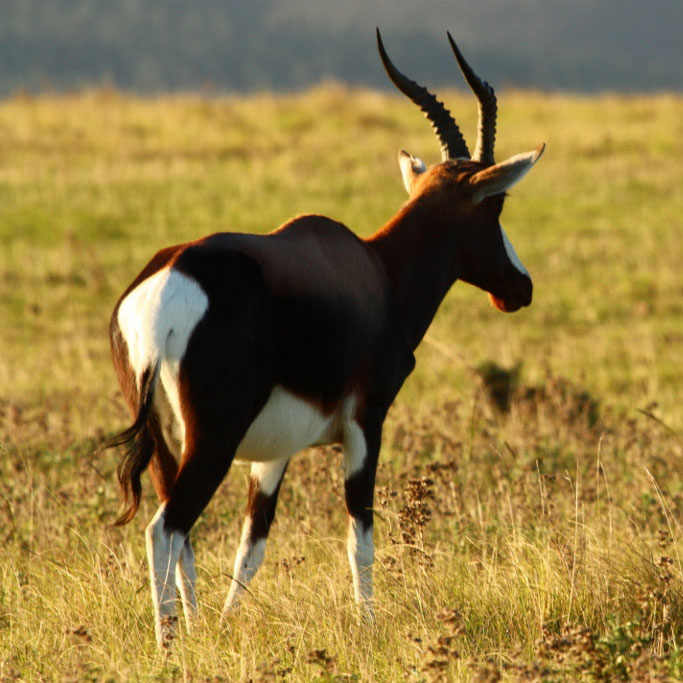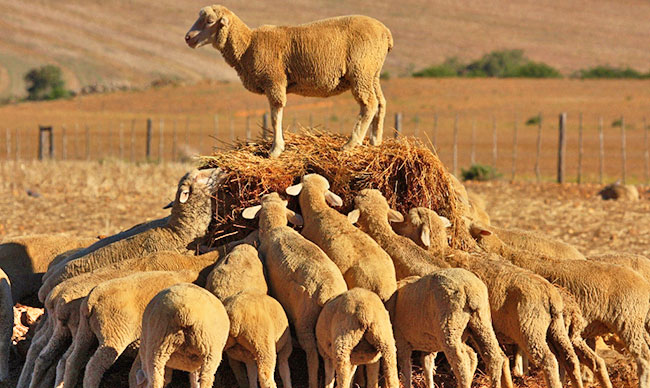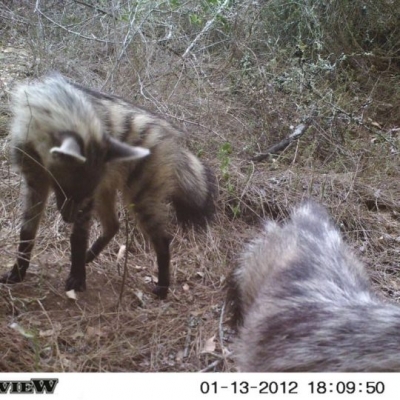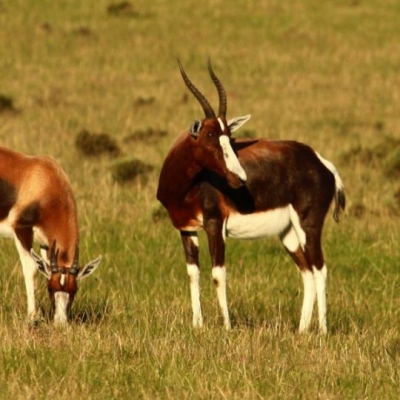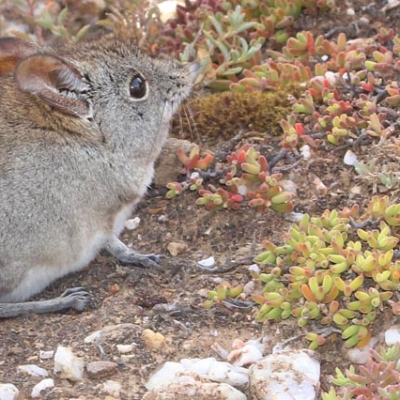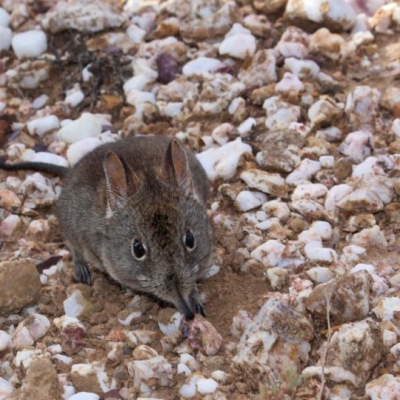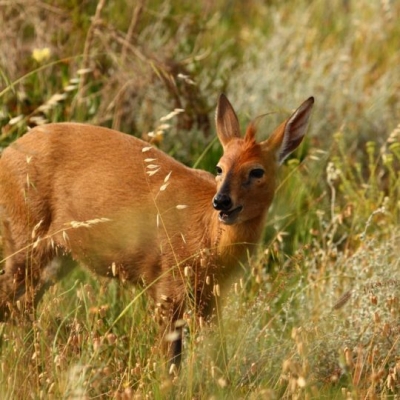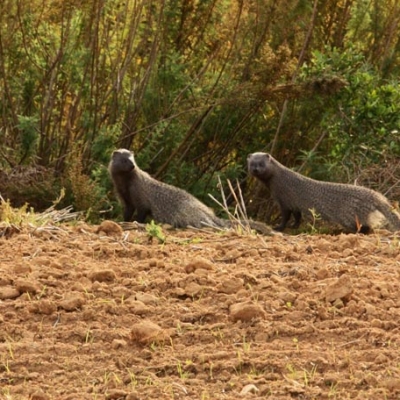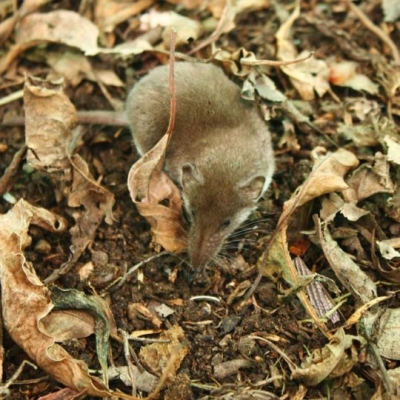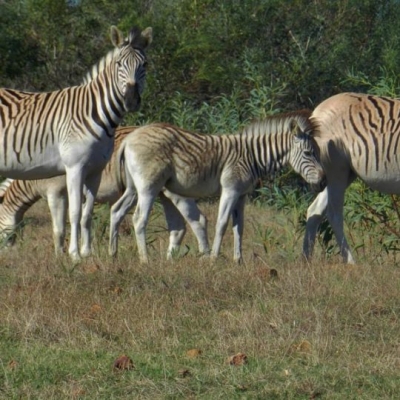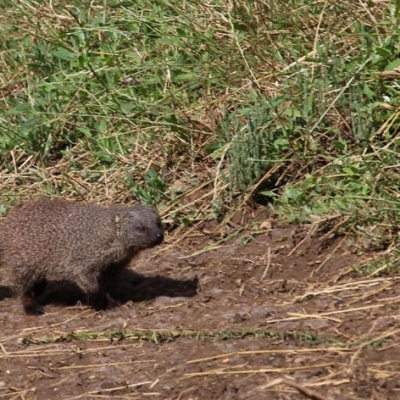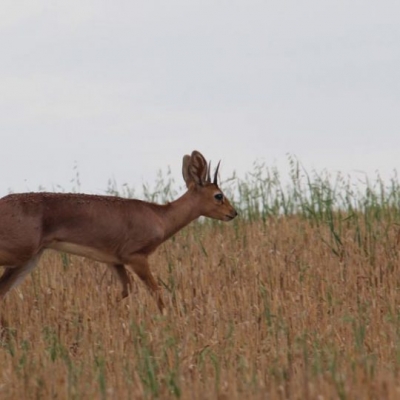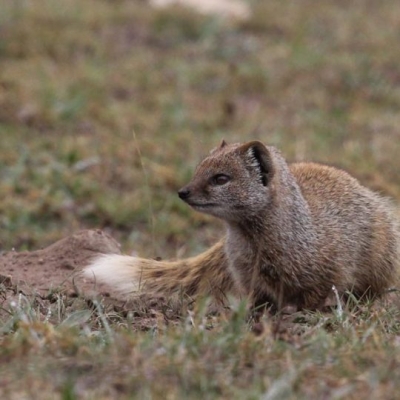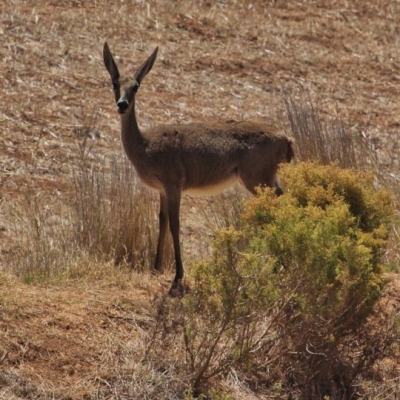The Renosterveld of South Africa’s Overberg region is one of the world’s most species diverse Mediterranean shrublands. This extraordinary vegetation once spread throughout the gently rolling hills and valleys of this beautiful area found at the tip of the African continent. An extraordinary diversity of large mammals roamed these landscapes. Sadly due to the area’s fertile soils most of the Overberg’s Renosterveld has been ploughed up for agriculture and only small fragments comprising 5% of its former extent survives today.
This is now a predominantly agricultural landscape, with fields of wheat, barley and canola interspersed with mostly small and fragmented patches of Renosterveld that have been lucky enough to escape the plough for now. This landscape once supported a far more diverse fauna. Some still survive today, but many are now only present in written descriptions by early travellers to the area.
Many of these historical accounts are limited to the northern parts of the Overberg around Caledon and Swellendam, as few travellers made the longer journey southwards as part of their journeys eastwards. However, there are sufficient historical descriptions that can be used to build a more detailed picture of this region at the time.
The Overberg’s Renosterveld used to support a significant diversity of larger mammals, two of which are now extinct. The Blue Buck and the Quagga are now only known from illustrations and photographs. Other mammals that are known to have occurred historically in the region include Cape Buffalo, Cape Mountain Zebra, Bontebok, and Red Haartebeest. They often used to roam in large herds through the landscape in the past, as described by Anders Sparrman as he travelled through the Overberg in 1775.
After the early colonists arrived, many of these larger mammals were rapidly hunted to local extinction, with the Cape Buffalo no longer present in the area by 1819. Perhaps one of the most iconic creatures known to have occurred historically in the Overberg region is the Black Rhino, after which Renosterveld vegetation is thought to have been named (for reasons not entirely understood, but they may have been linked to the resemblance of the colour of the dominant shrub (Renosterbos) to the colour of a Rhino’s hide, or it may have been a preferred foraging habitat for the species (there is certainly very little available for them to eat in Fynbos). However, very interestingly, presence of the Black Rhino in the Overberg is absent from written historical descriptions, but archaeological evidence suggests their presence up until 500 years BP.
In addition to the large herds of ungulates that used to roam the Overberg’s Renosterveld historically, there were also quite a number of larger predatory mammals that used to occur historically in the region. Lions used to occur in the region but Sparrmann commented that they were almost extinct in the Caledon district by the time of his first visit in 1775. Other large predators including Cape Leopards, African Wild Dogs and Spotted Hyenas survived longer in the area until the early 1800s. Today, Cape Leopards survive in the mountainous parts of the region, but are absent from the lowlands. There is also some evidence suggesting that Bushpigs were present in the area historically – they are certainly making a come-back (or moving into ‘new’ territory) today.
Today the large herds of game and their predators that once roamed this landscape are long gone, now replaced with monocultures of grain, canola and artificial pasture crops with sheep and cattle. Small herds of antelope including Grey Rhebuck are still seen, as well as the smaller, solitary antelope such as Common Duiker and Steenbok, with Cape Grysbok becoming rarer. Smaller insect-eating mammals such as Aardvark, Aardwolf and Bat-Eared foxes still survive, but are becoming increasingly rare. Caracal and the smaller predators such as the mongooses have survived, but there is likely to be an imbalance amongst these species due to the loss of top predators and the transformation of these landscapes. The survival of the remaining mammal species depends on food from the few larger remaining patches of Renosterveld as well as maintenance of corridors of vegetation retaining connectivity between patches of veld, allowing wildlife to move relatively undisturbed through the agricultural landscapes of today’s Overberg.
We would like to acknowledge the amazing farmers we are lucky enough to work with to conserve their Renosterveld. Please consider supporting the vital work of the Overberg Renosterveld Conservation Trust to help them manage and conserve more Renosterveld in perpetuity.
Further Reading
Curtis-Scott, O.E. Goulding, M. Helme, N. McMaster, R. Privett, S. Stirton, C. (2020) Field Guide to Renosterveld of the Overberg, Struik Nature, Cape Town, South Africa.
Skead, C.J. (2011) Historical incidence of the larger land mammals in the broader Western and Northern Cape, Second Edition (Eds: Boshoff, A.F. Kerley, G.I.H. Lloyd, P.H), Port Elizabeth: Centre for African Conservation Ecology, Nelson Mandela Metropolitan University.

